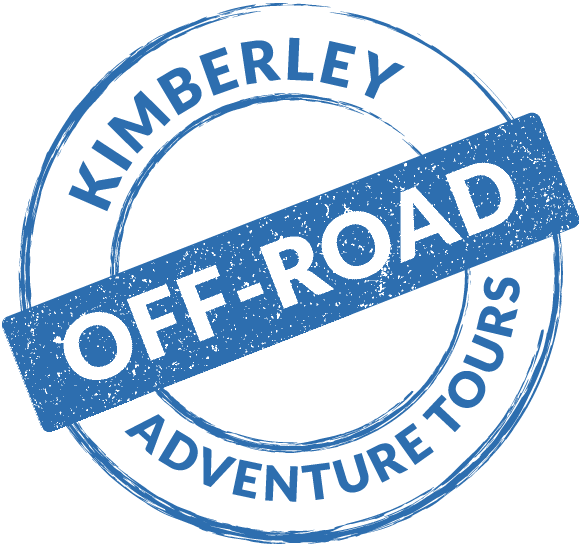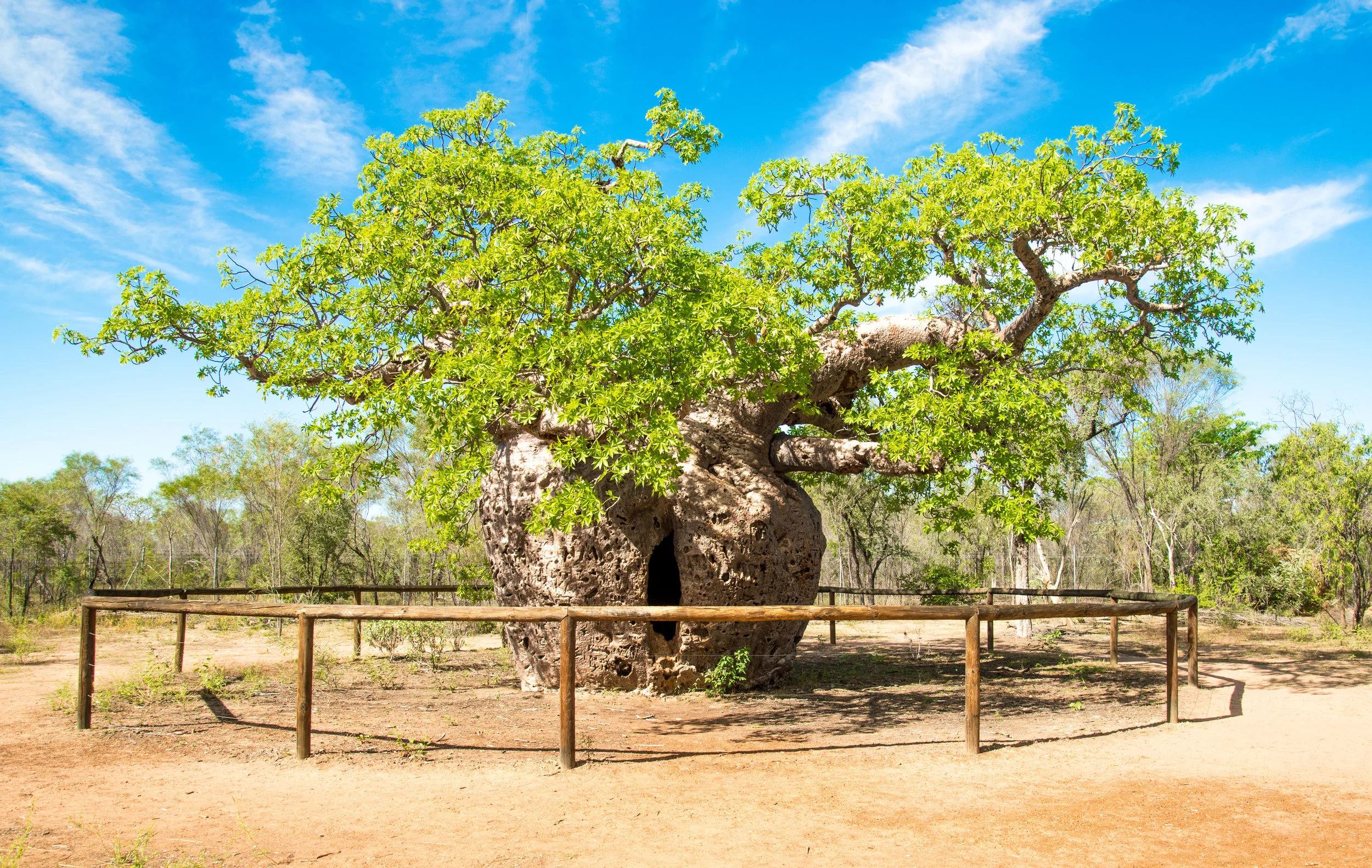The Kimberley and Victoria River Region Boab tree is unmistakable. Its sheer size and boldness catches everyone’s attention. How much do you know about these truly amazing trees?
The Australian Boab’s botanical name is Adansonia gregorii. It’s one of nine species, two of which are found in Africa and Arabia, and six of the species are found in Madagascar. Strangely enough the Australian Boab tree has always been in Australia, it arrived many thousands of years ago, however no one knows how it arrived. Some theories say it drifted in with the ocean currents and others wonder whether people brought it in. Some believe it may have arrived with Australia’s ancestors who are responsible for the ancient aboriginal rock art found in the Kimberley, the Bradshaw or Gwion Gwion paintings that are dated to around 17000 years. How the Australian Boab arrived is a mystery that may never be solved.
A Boab prison tree
The tree grows to around 15 metres tall and its trunk has been known to reach 16 metres in diameter. The tree looses its leaves in the dry season to conserve water, and it produces flowers and fruit in the wet season between November and March. The white flowers are fragrant and reach 10cm in width. The fruit of the tree can grow to the size of a small football but typically grows no larger than a tennis ball. It has a hard woody outer later and a white powdery pulp that protects the small bean-shaped seeds inside. The powder inside is very heathy for you, it contains high levels of vitamin C and about 50% of the powder is made up of soluble and insoluble fibre. Some health food companies sell boab power as a superfood.
The timber of the tree is very fibrous and when dried out it’s very light. It is not used as a building material because it’s not very strong and is susceptible to dry rot and termites. It also doesn’t make very good firewood. I was once told that in Madagascar you could see Boab trees disserted in open paddocks because the wood is useless for building and for firewood so the Boab is the only tree still standing.
Early explorers who arrived in the northwest of Australia used to carve into the tree trunks as a way of recording their presence at a place. The well-known Boab tree known as the Mermaid tree is where one of Phillip Parker Kings’ crew carved ‘HMS Mermaid 1820’ onto the Boab’s trunk. The Gregory tree is another Boab tree with a carving and it says ‘2nd July 1855’.
The trees hold special significance to the aboriginal people, as they’re an important food source and some of the larger trees are used for ceremonies, however many decades ago the large boab trees were also used as prison trees for the aboriginals who were being transported. Examples of prison boab trees are the Derby prison tree (you will visit this on our Kimberley tour) and the Wyndham prison tree. Sadly, Kimberley aboriginals were chained to these trees when they were being transported to the prisons in Derby or Wyndham. Some aboriginals were taken to Rottnest Island and never returned to the Kimberley again.
These days the boab nuts are sold as souvenirs. Aboriginals decorate the boab nuts by carving images of animals or their creation spirits, such as the Wandjana, on to them and then sell them on to tourists.
If you’d like a boab nut as souvenir or you’d like to see the boab trees in the Kimberley, book on to one of our Kimberley tours for an experience of a lifetime.

